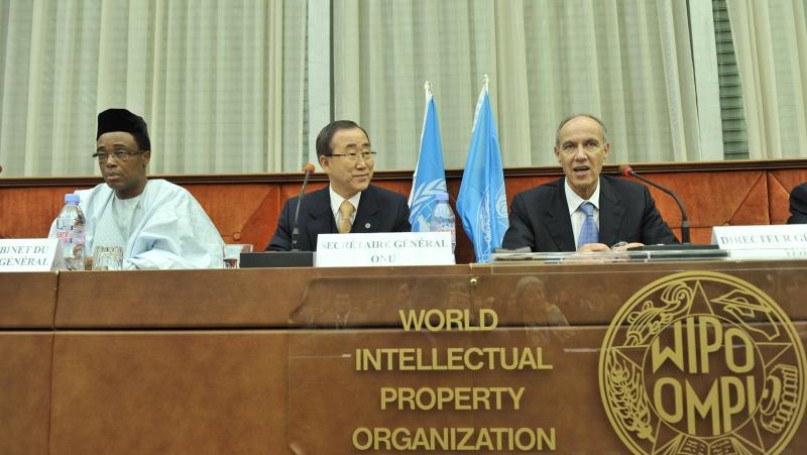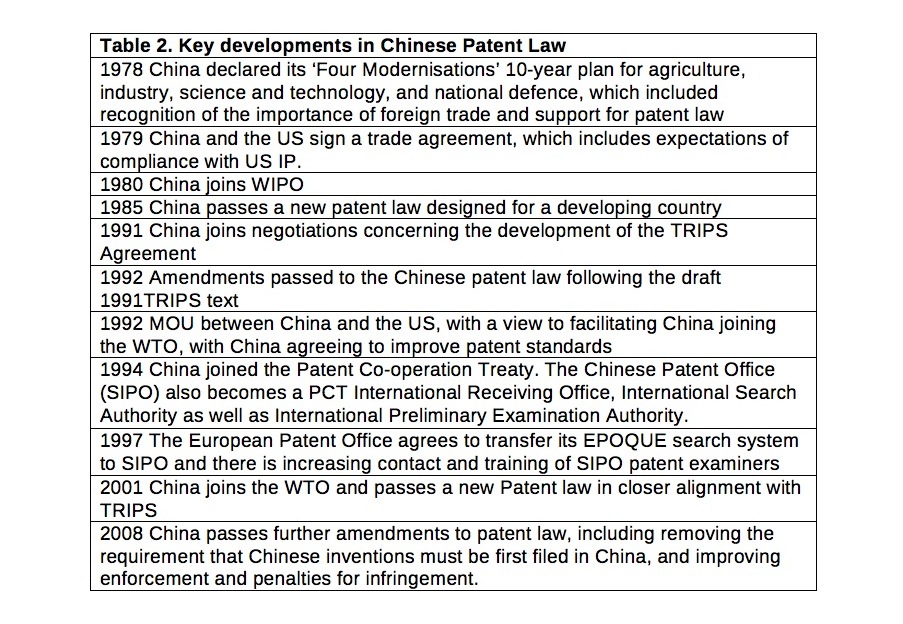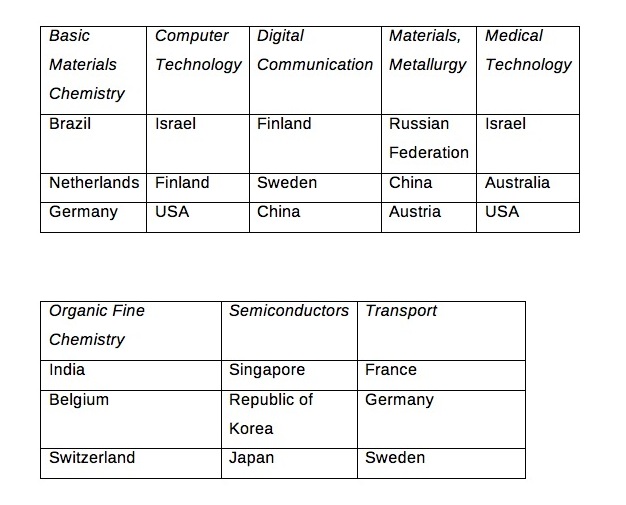
What Is the World Intellectual Property Organization (WIPO)?
The World Intellectual Property Organization is a specialized agency of the UN. It was established in 1967 with the aim of promoting intellectual property rights and rendering the global administration of intellectual property protection regimes more efficient. WIPO now administers twenty-six international treaties concerning industrial property rights: patent, trade mark, design, and plant variety rights, as well as treaties on copyright and performer’s rights. The organization also conducts policy formation in areas including traditional knowledge, global health, competition policy, economic policy, and climate change. Some of this activity includes negotiation over new international treaties, including Draft Articles For the Protection of Traditional Knowledge and For the Protection of Traditional Cultural Expressions. In other policy areas, WIPO hopes to influence global take-up of intellectual property rights by providing ‘best practice’ models, facilitating technical education to improve the robustness of rights, and supporting dissemination of information about inventions, such as WIPO GREEN, a database of green technology with a view to facilitate intellectual property licensing of these innovations.
World Intellectual Property Indicator Report 2013
Every year, WIPO produces statistics tracking the global growth in use of industrial property rights and providing nation states with information about their comparative performance. Copyright is not included because there is no international process requiring registration of copyright and, as such, tracking ownership and quantifying sector growth is harder. The information provided in the WIPO Indicators report suggests significant shifts are underway in the knowledge economy and, recently, press releases surrounding this data have generated much food for thought.
WIPO Director-General, Australian Francis Gurry, noted in a press release accompanying the 2013 World Intellectual Property Indicators Report (based on analysis of the 2012 figures) that “while economic recovery since the 2009 crisis has been uneven… IP filings have increased at a faster rate than before the crisis.” Patent filings worldwide grew by 9.2% in 2012, with over 200,000 international patent applications filed. This represented the fastest growth recorded in the past 18 years. Trade mark and design registration activity also reached new record levels. Francis Gurry said, “The new records in international IP filings attest to the importance of intellectual property in the global innovation ecosystem.”
The number of applications for trade mark, design rights, and, in particular, changes in patent activity domestically and globally can supplement analysis of GDP to track comparative performance in the knowledge economy. Especially given that information, rather than trade in goods and services, has become the foundation of the social, economic, and cultural order. There is no such thing as a global patent. Applicants have to file with national patent offices, and there are some differences in the technical criteria applied by the various national patent offices. However, WIPO administers the Patent Co-Operation Treaty (PCT) and provides data on multi-jurisdictional filings, where the applicant has selected a number of countries where they want patent protection. International filings suggest levels of confidence in global trade and trends in market growth. Rates of filing by non-residents in a domestic legal system, such as Chinese filings in the EU and USA, are also a sign of economic integration and multinational activity.
WIPO data also provides insight into respective domestic strengths in innovation in particular fields of technology. Figures provided in Table 1 are adjusted to correct for the effect of a country’s size, allowing a glimpse of particular national priorities and strengths in innovation.
Table 1. Top 3 National Concentration of Filings in Particular Technology Fields
Patent filings related to renewable energy have also grown continually, with growth of 5.3%, 2010-2012. Since the early 2000s, applications related to solar energy and wind energy have increased, whilst fuel cell technology has demonstrated a downward trend since 2007. The number of geo-thermal energy applications remains very low. You could provide a possible explanation for why this is the case.
China and the Global Patent System
A global growth in IP filings of 9.2% is celebrated by WIPO as a sign of their own success in promoting IP protection. This was very welcome news given that the role of Director-General was up for re-election this year and there had been some unwelcome controversies involving Francis Gurry. This included a breach of UN Sanctions against Iran and North Korea, with WIPO providing computers and servers to help set-up international patent databases in exchange for support for Gurry’s re-election. Despite the controversy, Gurry was re-elected for a second six-year term (to be ratified by the WIPO General Assembly extraordinary session on May 8-9, 2014).
The high growth figures are also seen as a hallmark of the success of global economic policy and US advocacy of international standards for protection of IP rights through the World Trade Organization Agreement on Trade-Related Aspects of Intellectual Property Rights (TRIPS) which came into force in 1995. TRIPS obligations apply to all WTO member states. Developed countries were given one year to ensure that their laws and practices conformed with the TRIPS agreement. Developing countries and transition economies were given five years, until 2000. Least-developed countries had 11 years, until 2006 — subsequently extended to 2021, in general.
China made significant reforms to its IP regimes after joining the WTO in 2001. See Table 2.
 The 2013 WIPO report shows that China is now the biggest contributor to global growth in intellectual property rights. In 2012, China experienced the fastest growth in patent filings worldwide at more than 20%, as well as double-digit growth in utility patents, trade mark, and design rights. Chinese residents also emerged as the largest patent filers all over the world. China now tops the global rankings for both the source (filings by China) and the destination (filed in China) for the four types of IP (patents, utility models, trade marks, and industrial designs). The Chinese Patent Office (SIPO) is also now the largest patent office in the world. It overtook the United States Patent and Trademark Office (USPTO) in 2011. Further, there are now two Chinese telecommunications corporations, ZTE Corporation and Huawei Technologies, in the “Top Ten” list of international patent filings under the PCT, protecting inventions abroad.
The 2013 WIPO report shows that China is now the biggest contributor to global growth in intellectual property rights. In 2012, China experienced the fastest growth in patent filings worldwide at more than 20%, as well as double-digit growth in utility patents, trade mark, and design rights. Chinese residents also emerged as the largest patent filers all over the world. China now tops the global rankings for both the source (filings by China) and the destination (filed in China) for the four types of IP (patents, utility models, trade marks, and industrial designs). The Chinese Patent Office (SIPO) is also now the largest patent office in the world. It overtook the United States Patent and Trademark Office (USPTO) in 2011. Further, there are now two Chinese telecommunications corporations, ZTE Corporation and Huawei Technologies, in the “Top Ten” list of international patent filings under the PCT, protecting inventions abroad.
China as a Pirate Nation?
Adrian Johns (2010) notes that piracy has become a leading trope for reading our economy, culture, and society. The recent WIPO figures challenge long-standing perceptions of the People’s Republic of China (PRC) as a pirate nation, stealing, rather than investing, in innovation, research, and development, and resistant to moves toward IP protection models. In his seminal work To Steal a Book Is an Elegant Offense (1995), William Alford had sought to explain why Chinese innovation, some of which was influential in advancing industrial development in Europe, took place without the need for western-style intellectual property rights. He argued the concepts were never part of Chinese philosophy and political culture. Twentieth century American attempts to introduce intellectual property laws to the PRC were bound to fail because much more than diplomatic pressure was required to implement them. For change to occur, there was a need for engagement with Chinese legal values and reform of relevant institutions, taking into consideration how IP models could be made relevant to the PRC. The US signed MOUs with the PRC in 1989, 1992, and 1995, each keeping up constant bi-lateral pressure on China to adopt and enforce US expectations of IP standards. The agreements were enforceable through ‘Special 301 Actions’ whereby the United States Trade Representative (USTR) can instigate trade retaliations (Drahos 2002, p.106). Drahos (2010, p.226) argues that in the 1980s and ’90s, “The basic pattern consisted of US complaints about Chinese standards of protection followed by threats of trade retaliation against Chinese exports to the US market leading to a negotiated settlement of some kind”. Though China had joined WIPO in 1980, the PCT in 1984, and had begun reforming patent law, the perception throughout the last century was that China would never catch up with the United States (Alford, 1997, p.152).
China did, however, begin to more fully engage for strategic reasons. The PRC saw the patent system as a means of gaining access to foreign technology and as a signalling device for the purpose of direct foreign investment. China wanted membership of the WTO, and that meant improving IP protection (Drahos 2010, p.226).
In 1995, WIPO signed an agreement with the WTO agreeing to provide technical assistance to transitional and developing countries to help improve the administration of rights and frameworks for making new laws operational (Drahos 2010, p.264). China has taken up these opportunities with WIPO, the European Patent Office (EPO), and foreign universities, and by entering MOUs with many others to facilitate SIPO’s ‘capacity-building’, providing access to training, international databases, and patent documentation. There are also trilateral policy dialogues between SIPO, the Japanese Patent Office, and the Korean IP Office, which involve co-operation in automation of systems. SIPO has also built specialized databases of relevant technological information beyond patents for a large range of enterprises, including the Haier Group, Military Medicine and Science Institution, Chunlan, Jinling, etc. Drahos argues that “SIPO has grown rapidly for the simple reason that the government sees patents as part of its overall strategy of economic growth through trade” (2010, p.231).
The WIPO Director General explains the situation slightly differently. In Gurry’s press conference, he responded to a question about comparative performance suggesting,
China is still very much in a development mode. It is still developing its expertise in this area so with enormous investment in research and development, it is the second largest investor in research and development in absolute terms in the world, enormous investment in education and these investments in knowledge infrastructure if you like are also being reflected in the take up that we see in the use of the intellectual property system.
Is the WIPO Data Signaling a Change for the Good?
To generate income, generally IP rights have to be commercialised, and the value of the rights depends on the quality of the patent. To rely on just the quantity of filings or number of patents granted to deduce economic health is to draw a long bow. However, with the rise of the information economy, multi-national corporations with interests in chemicals, pharmaceuticals, agriculture, and food have sponsored the notion that maximal IP protection and the award of rights is an international public good, essential to investment and dissemination of innovation and economic growth, and that without private incentives, new technologies would never be developed. Multinationals have a particular interest in global administration of IP rights because,
multinationals want simple and common application procedures and a multilateral approach to patent office administration in which, for instance, the examination work of one office is used or recognized by other offices leading to a saving of work and time by these other offices (Drahos, 2010, p.9).
A maximalist ideology obscures the role played by various public subsidies and incentive schemes that support research and development, and ignores the problems IP rights create, in particular impeding access to medicine, education, clean technologies, and making it more difficult to address some of the needs of developing countries.
There are also significant differences in economic benefits of the patent regime between countries with implications for balance of trade, depending upon who the relevant owner of the right is. WIPO provides statistics on the balance of filing by residents compared to non-residents. Non-resident filings predominate in Australia (90%), Brazil (84%), Canada (86.6%), Hong Kong (98.7%), Mexico (91.6%), India (78.3%), Singapore (88.8%), South Africa (91.8%), and New Zealand (79.9%), compared to China (18%), Japan (16.3%), Korea (21.6%), Germany (24%), UK (33.8%), and the USA (50.5%).
Drawing upon long-established western readings of China as a pirate nation, some critics question whether what is being granted by SIPO is rights over technologies essentially invented by the West. The filing of an application for an IP right tells us very little about the nature of the innovation and whether what is claimed will stand up to scrutiny on examination or if the patent were litigated. WIPO is unable to evaluate the quality of applications filed or rights granted, and it is very difficult to conduct comparative evaluation of the efficacy of rights granted. There are also differences in rigor across patent offices – about whether it is novel (meaning not already published elsewhere), inventive (a practical advance), and whether the drafting of the specification was such that it would enable others to actually work the invention. Badly drafted patents seek to simply stake out a property claim over a broad area of technical activity and stifle competition. However, whilst there are significant problems with copyright and trade mark piracy (Dimitrov 2009), Li (2010) shows the influence of patent on the Chinese pharmaceutical and biotech industries, and the extent to which the Chinese government’s patent policies and patent activity by Chinese firms is influencing the notion of innovation in China.
Drawing significance from the WIPO data is affected by how one thinks about their own and China’s future in the global economy. Developed countries are now accustomed to the idea of lowly paid and manufacturing jobs going offshore to China and elsewhere, conscious of the income gaps, growing social inequality, and urban decay left behind. We are far less comfortable with our white collar and professional jobs leaving our shores. The West being ‘smarter’, ‘cleverer’, and being more competitive through advances in technological know-how and innovation is supposed to provide for our futures. China can make ‘our stuff’, but it is based on our ideas, and the big money to be had is primarily based on the IP we own. The idea of China as a global innovation leader owning the relevant IP, rather than as a follower and licensee of foreign IP, is seen to be a much scarier prospect.
Further References
Alford, WP, 1995, To Steal a Book Is an Elegant Offense. Intellectual Property Law in Chinese Civilization, Stanford University Press, California.
Alford, WP, 1997 ‘Making the World Safe for What? Intellectual Property Rights, Human Rights and Foreign Economic Policy in the Post-European Cold War World’, 29 International Law and Politics, p.135
Dimitrov, M 2009, Piracy and the State : The Politics of Intellectual Property Rights in China, Cambridge University Press, Cambridge UK; New York.
Drahos P with Braithwaite J 2002, Information Feudalism. Who Owns the Knowledge Economy?, Earthscan, London.
Drahos P 2010, The Global Governance of Knowledge, Cambridge University Press, Cambridge UK; New York.
Johns, A 2010 Piracy. The Intellectual Property Wars from Gutenberg to Gates, University of Chicago Press, Chicago; London.
Li, Y 2010 Imitation to Innovation in China, Edward Elgar, Cheltenham, UK.
May, C & Sell S 2006, Intellectual Property Rights. A Critical History, Lynne Reinner Publications, Colorado.
Rimmer, M 2011, Intellectual Property and Climate Change: Inventing Clean Technologies, Edward Elgar, Cheltenham, UK.
World Intellectual Property Organization, World Intellectual Property Indicators 2013, http://www.wipo.int/ipstats/en/wipi/
Further Reading on E-International Relations
- The United Nations in Crisis: Geo-Political and Geo-Economic Challenges
- The UN COP26 and ‘30 by 30’: Turning Points or More Business-As-Usual?
- The Responsibility to Protect in 2020: Thinking Beyond the UN Security Council
- Equal Voices, Shared Futures: Reforming the UN at a Critical Crossroads
- The Global South and UN Peace Operations
- Developing Countries and UN Peacebuilding: Opportunities and Challenges
